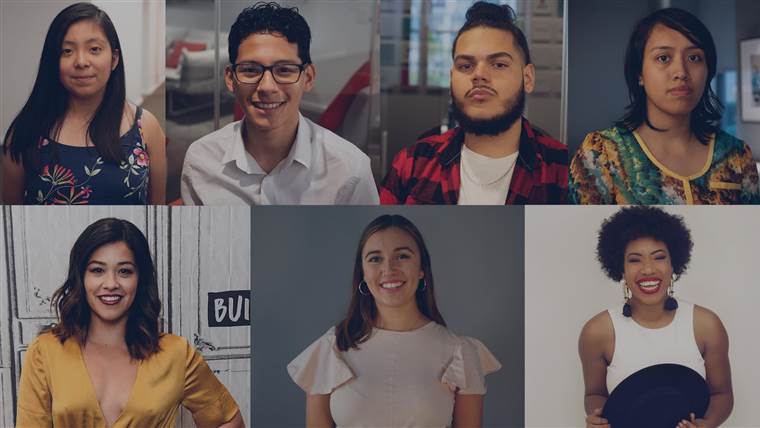By Suzanne Gamboa, Sandra Lilley and Sarah Cahlan
NBC News,
For many young Hispanics, navigating their parents’ culture in the U.S. has shaped their views on what it means to be American.
Jason Mero, 18, headed off to Brown University this fall proudly staking claim to his Latinx heritage, ever mindful that the sacrifices his immigrant parents made opened the doors of the Ivy League to him.
Born in Queens, New York, to parents who emigrated from Ecuador 30 years ago, Mero would ruminate with his family growing up about the challenges facing an American with Hispanic roots: how to deal with a more hostile environment against Latinos, and how to assert his U.S. citizenship, his birthright, while staying connected to his community.
“My family growing up wanted me to stick with my Hispanic roots, but also did not want me to show those roots to the world outside,” Mero told NBC News. “They knew that being Hispanic-American isn’t necessarily looked (upon) with a smile … in this country. So they were doing that for my safety and to protect me. But even so, these conversations have shown me that I’m still proud of being Hispanic, even though it’s being frowned upon by other people.”
One million Hispanic-Americans will turn 18 this year and every year for at least the next two decades, said Mark Hugo López, director of global migration and demography research at the Pew Research Center. That stream of adolescent Latinos coming of age in the U.S. started a few years ago and is now gushing.
“This won’t be a passing wave,” Lopez said, “but instead an ongoing process over the next 20 years as the young Latino population enters adulthood.”
Although percentage-wise Asian Americans are the nation’s fastest-growing minority group, the Latino population will add more people each year to the U.S. than any other group for the next few decades, and their median age is younger than Asian Americans, according to Pew Research Center.
Most of these young Latinos have one thing in common — they were born in the United States.
Nine out of ten Latinos under 18 are U.S. born.
For those under 35, it’s about eight in ten, according to new figures from Pew Research Center.
Over half of Latinos under 18 and roughly two-thirds of Latino millennials are second-generation Americans — born in the U.S. to least one immigrant parent.
“These young Latinos are U.S. born, going through U.S. schools,” Lopez said, “yet they grew up in Latino households, exposed to the culture of their parents’ home country — that is the distinguishing point. They have all the markers of being American, yet they are the children of immigrants.”
Navigating their parents’ immigrant culture while being born and raised in the U.S. has shaped their views on identity and what it means to be an American — factors that are, in turn, shaping the nation’s adult workforce and electorate.
JUGGLING LANGUAGE, COLOR, CULTURE
Like other population waves throughout the country’s history, these young bicultural Americans are coming of age enmeshed in their Latino and American worlds and trying to carve out a place for themselves in both of them and between.
Berenize García, 16, of New York City, said her father, a Mexican immigrant, has pressured her to be “more American,” while her mother told her it’s disrespectful not to retain and speak Spanish to their Mexican relatives.
“That makes me feel confused, because how can I be Mexican when I’m pressured to be more American? How can I be American when I’m pressured to be more Mexican?” she said.
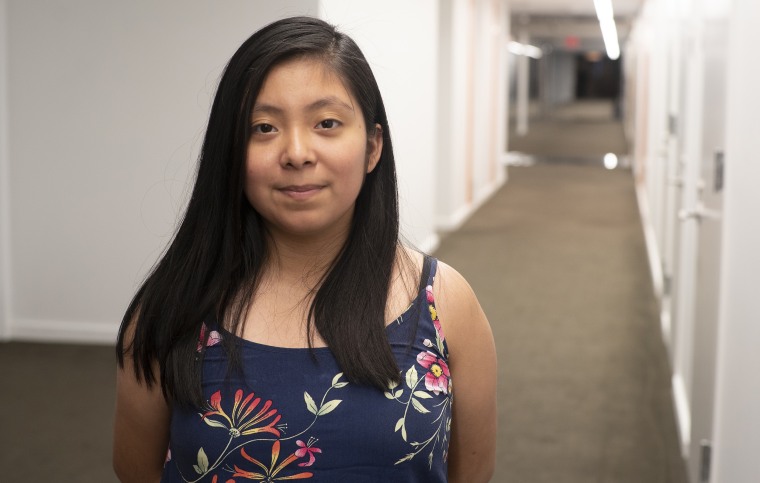
Berenize Garcia (Nirma Hasty)
Her confusion is captured in a scene from the 1997 movie “Selena,” in which actor Edward James Olmos, playing a father, tells his children how difficult it is to be Mexican-American and the nonacceptance that comes from both Mexico and the United States: “We have to be twice as perfect as everybody else.”
These experiences with language and culture have imprinted themselves on García and have affected how she sees her future.
“I’m trying to, hopefully, one day become a doctor, and in that way empower my patients who have that language barrier, because my mom, who goes to the doctor constantly, can’t really express her pain because she doesn’t speak English,” García said. “Her pain is brushed off.”
While this younger generation of Latinos is more conversant in English than their immigrant parents’ generation, three-in-four young Hispanics say they use Spanish as well, according to Pew.
Toggling between two languages — and that it’s hard to be truly bilingual — is perhaps one of the most common threads growing up for these young Latinos.
“We’re stripped in a lot of cases of our Spanish tongue and our Spanish heritage and told it’s really important that you only speak English and you know how to speak English well because otherwise, you’re going to face hardship, which is in a lot of ways true because of the prejudice that this country holds,” said Alma Flores-Perez, 21, born and raised in Austin, Texas.
“But at the same time, I’ve really come to see the importance of speaking Spanish or at least trying to claim that as our own and not be ashamed when you do speak Spanish, but also not being ashamed if you weren’t taught it, because that wasn’t necessarily your choice,” Flores-Perez said. She thinks her bicultural upbringing is one of the reasons she’s majoring in linguistics at Stanford.
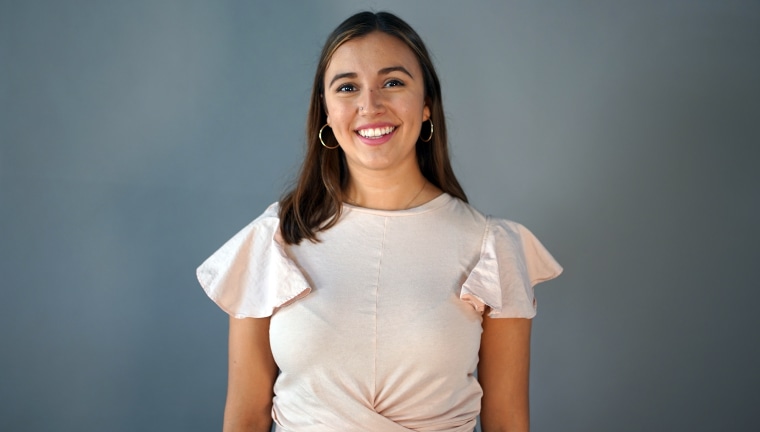
Alma Flores – NBC News
Even more of an impact than language, for many young Latinos, is how their skin color influences how they’re perceived, not only by other Americans but by other Hispanic Americans.
Flores-Perez, who is light-skinned, has been questioned when she identifies herself as Chicana.
“I’ve been called whitewashed,” said Flores-Perez, who said it hurt to not be considered Latina enough because of her light complexion. But she’s come to understand it’s not something she can control.
“I think I can do my best to project that identity and to make clear who I am and explain when people ask,” she said.
Christopher Robert, 18, of Brooklyn, whose mother is Dominican and father is Puerto Rican, said, “There are a lot of people in my family who have a dark skin tone, but still, like, insist that they’re part of a white Latino population.”
Robert, who describes himself as Afro-Latino, added, “I choose to acknowledge it and accept it as part of who I am.”
Leyanis Díaz, 25, is an Afro-Latina blogger and entrepreneur based in Miami who was born in Cuba and came to the United States with her family when she was 3.
“I had people tell me they didn’t even know that there were black people in Cuba, which made me really feel …,” she said pausing. “It gave me self-esteem issues, for the most part.”
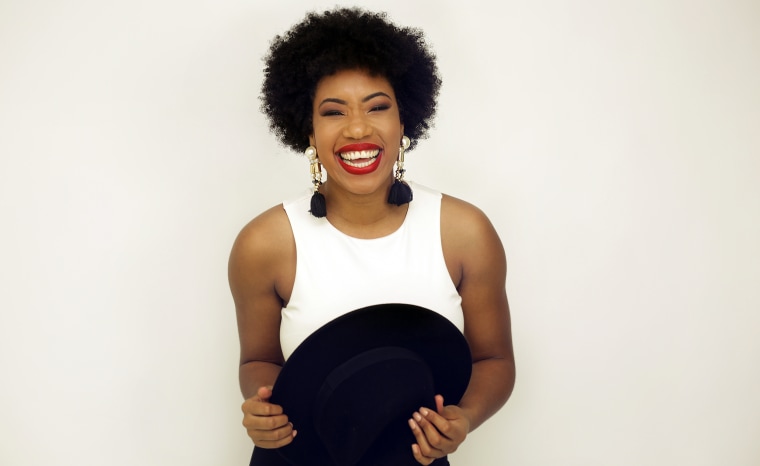
Leyanis Diaz (Ned Chandler)
That didn’t stop her from entering, and winning, the Miss Black Florida USA pageant last year. “In all honesty, the way I’ve combated these stereotypes is by continuing to educate not only my friends, but the people that I encounter —educating them about Cuba, where I come from, teaching them more about my culture,” Díaz said.
Many young Latinos see themselves as in-between skin colors and races.
Jeanette Garzón Terreros, 18, a freshman at Columbia, said that when she’s filled out certain forms, she has left blank the questions on race or ethnicity.
“I don’t identify as white, I don’t identify as black, I don’t identify as any of the things, and they don’t put an ‘other,’” she said. Garzón Terreros said she saw a picture of the part of Mexico that her parents are from, and the people looked part indigenous, part Spanish. “It’s like the mix between the two races.”
EXPERIENCES SHAPE THEIR OUTLOOK
Beyond issues of language and color, living amid their immigrant parents and their extended network has influenced how young Latinos see issues in the U.S. and beyond.
Some recounted, amid smiles, growing up as Latinos while not necessarily embracing their families’ traditions. “I don’t dance; salsa, nothing,” said Christopher Robert. “I don’t know how to cook Dominican food or anything.”
More seriously, they spoke of the pressure their parents felt to help relatives in their home countries, despite not having much more money themselves.
They also spoke of having to explain their identity not just in their U.S. neighborhoods, but in their parents’ home countries, to family members who questioned their accents or status based on their U.S. experience.
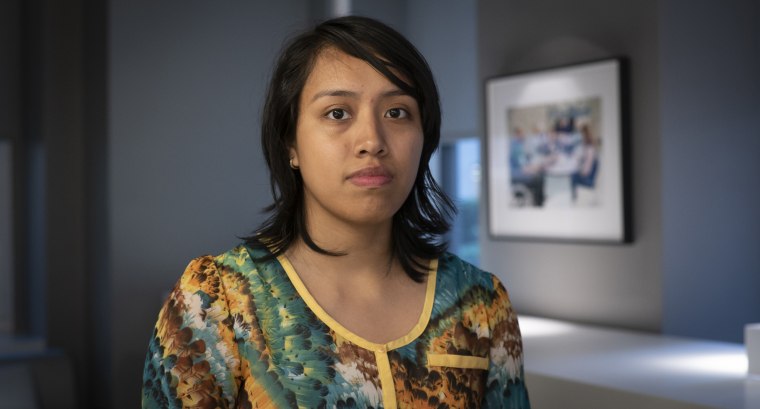
Jeanette Garzon Terreros (Nirma Hasty)
Here at home, U.S.-born young Latinos also grow up with the reality that depending on their family or friends’ immigration status, they could one day be taken by immigration enforcement officers, held in detention for long periods and possibly deported.
With community if not familial ties to immigrants — including legal residents without documents and people with deportation deferrals — detentions and deportations or the fear of them are part of young Latinos’ daily lives.
Flores-Perez said she was “really rocked” when President Donald Trump brought up trying to rescind the DACA program, Deferred Action for Child Arrivals, which allowed undocumented young people brought to the U.S. as children to remain in the country.
Her best friend, from Honduras, was a DACA student. “I was terrified, and she was terrified because she’s been here since she was 2 years old. This country is all she knows,” said Flores-Perez.
A survey of millennials released in January found that 49 percent of millennial Latinos worried a lot that a family member or close friend could be deported, compared to 25 percent of Asian Americans and 21 percent of African-Americans. White millennials’ experience was the polar opposite to Latinos: Fifty percent said they did not know anyone at risk of being deported.
Young adults under 35 are already the most diverse generation in U.S. history, according to Stella Rouse, a University of Maryland political scientist. The diversity has found its way into politics and policy making and is likely to give a distinct shape to how the country addresses major issues.
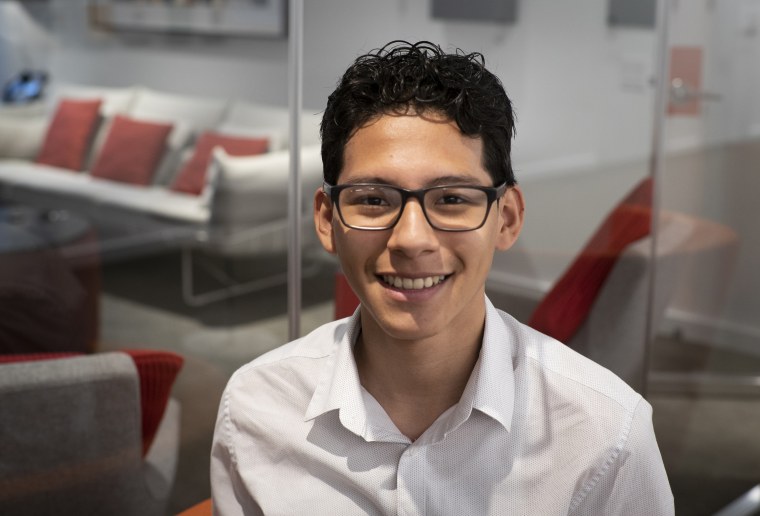
Jason Mero (Nirma Hasty)
In her new book, “The Politics of Millennials” — written with Ashley D. Ross, an assistant professor at Texas A&M University — Rouse argues that millennials’ diversity, combined with growing up amid the Sept. 11, 2001, terrorist attacks, the Great Recession and the debate over immigration, “simply guides a lot of attitudes and policy preferences.” This includes their views on the economy, the role of government in providing opportunities and how to deal with a lack of access to health insurance.
Rouse sees the influence of diversity and upbringing in young Latinos’ attitudes toward climate change, for example.
The share of Latino millennials who believe climate change is occurring is about 49 percentage points higher than white millennials and 20 percentage points higher than African-Americans.
Young Latinos may be disproportionately affected by climate change considering where they live, how many of them or their families are employed in the agricultural industry and that they have relatives in other countries that have experienced climate-related issues, Rouse said.
CHALLENGES AND OPPORTUNITIES
As with every generation, a young person’s trajectory is eventually tied not only to their prosperity but to the country’s economic success. When looking at the nation’s Latino youth, there are challenges and there are opportunities, according to Pew Research’s López.
On the one hand, a record number of young Latinos, 3.6 million in 2016, are attending college, and their share is growing, according to Pew. Additionally, 67 percent of Latinos ages 25 and older had earned a high school degree.
Yet they lag behind other groups in pursing higher education. Just 17.2 percent of Hispanic adults have a bachelor’s degree and 5 percent an advanced degree, compared to 38.1 percent and 14.3 percent of non-Hispanic whites, according to the Hispanic Association of Colleges and Universities.
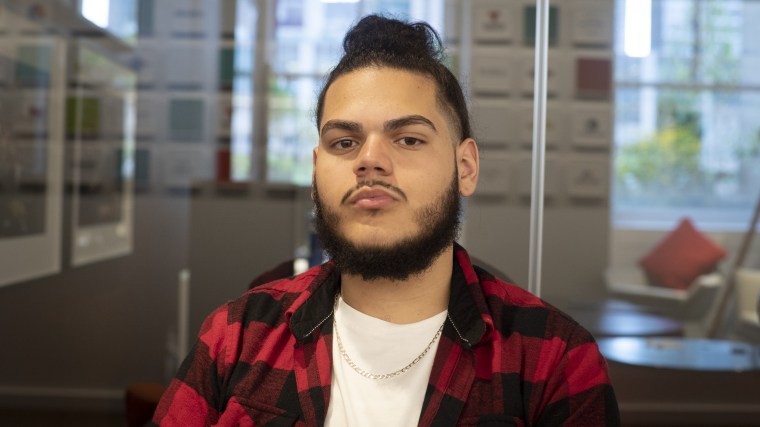
Christopher Robert (Nirma Hasty)
One of the biggest issues is college costs, complicated by the fact that Latino families, which generally started the Great Recession with less net worth than other ethnic groups, lost 66 percent of their household wealth during this period.
“I’m at Northeastern right now — I’m only here because there was a good financial aid package, and even so it was extremely expensive,” said Robert, the Brooklyn teen. “Before I made my decision, I sat down with my mom and asked her, ‘Are you sure you want to do this?’”
Despite financial odds, young Latinos are profoundly optimistic. More than three-in-four Hispanics ages 18-35 say most people who want to get ahead will be able to make it if they work hard.
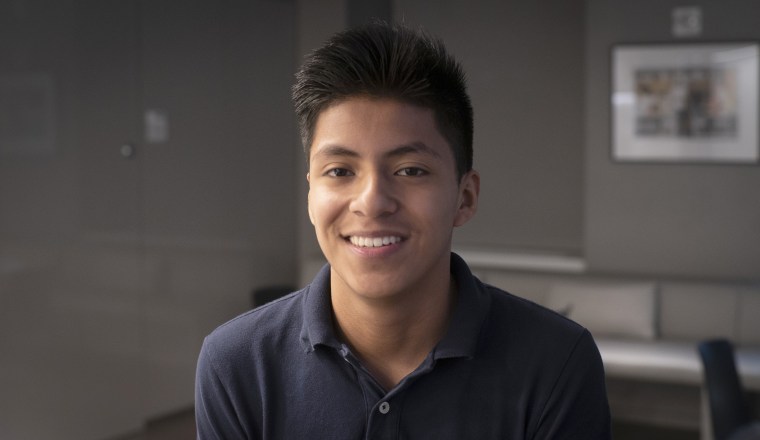
Marco Garcia (Nirma Hasty)
Marco Garcia is Berenize’s twin brother. He described their immigrant parents’ hard work. “My dad works six days a week from 10 to 10,” Marco said. “My mom works as a housemaid, scrubbing floors, cleaning bathrooms and what not.”
When they were younger, Marco was embarrassed by his parents’ broken English when they came to school functions. Now he and his sister, students at Uncommon Charter High School in Brooklyn, see it as a point of pride that they’re children of immigrants — as well as high achieving students.
“I feel very optimistic about the future,” Berenize said. “Our parents already did the majority of the work. All we’ve got to do is just finish it.”

